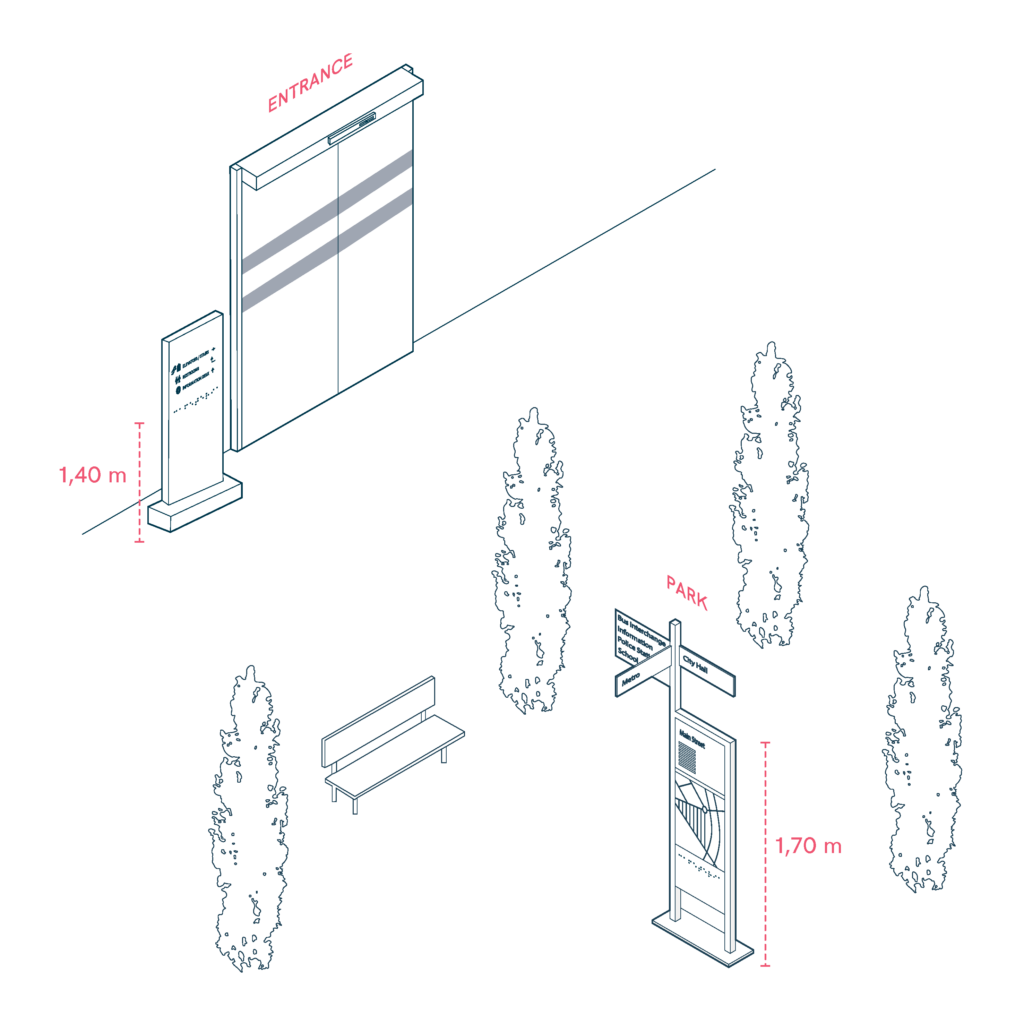Well-Placed Signs
Clear and accessible signage is essential for navigation in public spaces. By using universal design principles—such as well-placed signs, tactile and braille features, and clear typography—wayfinding systems become inclusive for all users, including those with visual or cognitive impairments. This enhances accessibility, ensuring that public spaces are welcoming and easy to navigate.

- In public buildings, information should be placed near the entrance or in easily identifiable locations from access points, considering the structure and function of the building.
- There should be as many information points as necessary, ensuring that informational panels are visible and not obstructed by open doors, furniture, or crowds.
- In open spaces such as plazas, parks, and gardens, signs should indicate the location of key services, facilities, and activities.
- Implement accessible wayfinding design, including tactile and braille signage for people with visual impairments.
- Ensure that signage is clear, visible, and positioned at an accessible height for different users (between 1.40 m and 1.70 m above ground level).
- Use maps and directional signage to help users navigate and orient themselves easily.
Sources
- https://accessible-eu-centre.ec.europa.eu/content-corner/digital-library/en-172102021-accessibility-and-usability-built-environment-functional-requirements_en
- https://www.access-board.gov/adaag-1991-2002.html#2.%20GENERAL
- https://universaldesign.ie/built-environment/building-for-everyone/building-for-everyone-full-series
- https://www.codigotecnico.org/pdf/Documentos/SUA/DccSUA.pdf
- Carers
- Children
- Cognitive
- Cognitive abilities
- Decolonial perspective
- Digital
- Digital barrier
- Enviroment
- Environmental
- Gender and generations
- Gender perspective
- Hearing impairment
- Low-education
- Low-income
- Older people
- Other
- Physical abilities and features
- Sensory and Physical
- Socioeconomic
- Visual impairment